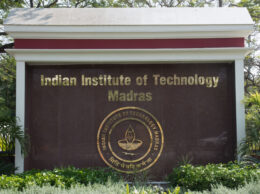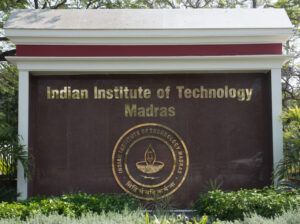During COVID-19 Pandemic, Government of India has held various consultations with the States and UTs at different levels. Also, a brain storming session was held with Civil Society Organizations (CSOs) in January, 2021 for taking their views/ perspectives to assess and to bridge the learning gap in the Covid-19 pandemic period.
Education is in the concurrent list of the Constitution and majority of the schools are under the domain of respective State and UT Governments. However, to ensure that every student gets continued access to education, a multi-pronged approach has been adopted. A comprehensive initiative called PM e-VIDYA has been initiated as part of Atma Nirbhar Bharat Abhiyan on 17th May, 2020, which unifies all efforts related to digital/online/on-air education to enable multi-mode access to education. The initiative includes:
- DIKSHA (one nation, one digital platform) is the nation’s digital infrastructure for providing quality e-content for school education in states/UTs and QR coded Energized Textbooks for all grades are available on it. 35 of the 36 states and UTs have on boarded on DIKSHA platform and contextualised the content as per the local need.
- One earmarked Swayam Prabha TV channel per class from Class 1 to 12 (one class, one channel).
- Extensive use of Radio, Community radio and CBSE Podcast- Shiksha Vani.
- Special e-content for visually and hearing impaired developed on Digitally Accessible Information System (DAISY) and in sign language on NIOS website/ YouTube.
Besides, the Ministry has undertaken a proactive initiative, named, ‘MANODARPAN’ covering a wide range of activities to provide psychosocial support to students, teachers and families for Mental Health and Emotional Wellbeing during the COVID outbreak and beyond.
The Central Government is constantly advising States/UTs through guidelines and meetings with respect to interventions for reducing impact of pandemic on education. The guidelines issued so far are given below:
| S.No. | Interventions | Links of Guideline |
| 1. | Guidelines for Children of Migrant Labourers | https://www.education.gov.in/sites/upload_files/mhrd/files/Migrant%20labour%20guideline.pdf |
| 2. | Guidelines for Out of School Children and Mitigation of Loss of Learning | https://www.education.gov.in/sites/upload_files/mhrd/files/guidelines_oosc.pdf
|
| 3. | PRAGYATA Guidelines on Digital Education | https://www.education.gov.in/sites/upload_files/mhrd/files/pragyata-guidelines_0.pdf |
| 4. | Learning Enhancement Guidelines for Continuous Learning | https://ncert.nic.in/pdf/announcement/Learning_%20Enhancement_Guidelines.pdf
|
| 5. | Covid-19 Related Health and Safety Sop/Guidelines for School Re-Opening | https://www.education.gov.in/sites/upload_files/mhrd/files/SOP_Guidelines_for_reopening_schools.pdf |
| 6. | Covid Action Plan for School Education | https://www.education.gov.in/sites/upload_files/mhrd/files/Covid_Action_Plan.pdf |
| 7. | Alternate Academic Calendar | Secondary- https://www.education.gov.in/sites/upload_files/mhrd/files/Academic%20Calender%20-%20Secondary%20-%20Eng.pdf
Primary- – https://www.education.gov.in/sites/upload_files/mhrd/files/Eight_Weeks_AAC_Primary_%28English%29%5B1%5D_0.pdf |
| 8. | Guidelines for JNV –Residential Schools | https://drive.google.com/file/d/1LAc4iKQTqTJkNVDGc5glEDsrDGdAXwC8/view
|
| 9. | Guidelines for parents on Home Based Education | https://www.education.gov.in/sites/upload_files/mhrd/files/MoE_Home_Learning_Guidelines.pdf |
| 10. | Guidelines for orphaned Children | In this regard, a joint DO letter No. 13-10/2021-IS-11 dated 16.06.2021 from Secretary DoSEL, MoE and Secretary, MWCD has been issued to all States and UTs. |
| 11. | Guidelines for developing E-content for CWSN | https://www.education.gov.in/sites/upload_files/mhrd/files/CWSN_E-Content_guidelines.pdf |
| 12. | CBSE competency-based assessment framework | http://cbseacademic.nic.in/web_material/Manuals/Safal_handbook.pdf |
| 13. | NCTE Guidelines for TEIs | https://ncte.gov.in/WebAdminFiles/RecentAnnouncement/0_20_08_2020_637335320672297662.pdf |
The details of the major schemes to promote education in the country implemented by the Government of India are as follows:
(I) Samagra Shiksha: The Government of India launched Samagra Shiksha-an Integrated Scheme for school education, w.e.f 2018-19, as an overarching programme for the school education sector extending from pre-school to class XII, which aims to ensure inclusive and equitable quality education at all levels of school education, across the country including the rural areas. The scheme has now been aligned to NEP, 2020 recommendations and extended till 2025-26. The scheme provides support to States and UTs for strengthening of infrastructure in schools, universal access, bringing gender equality, promoting inclusive education, quality of education, financial support for teachers’ salary, digital initiatives, entitlements under the Right of Children to Free and Compulsory Education (RTE) Act, 2009 including uniforms and textbooks, pre-school education, vocational education, sports and physical education and strengthening of teacher education institutions.
(II) Mid-Day-Meal (MDM): Mid-Day Meal Scheme (MDMS) is an on-going Centrally-Sponsored Scheme which provides nutritional supplement to all school children studying in Classes I-VIII of Government, Government-Aided schools, Special Training Centres including Madarsas and Maqtabs.
(III) Padhna Likhna Abhiyan: A centrally sponsored scheme of Adult Education namely, “Padhna Likhna Abhiyan (PLA)” was implemented during 2020-21 with a physical target of imparting functional literacy to 57 lakh adult illiterates in the age group of 15 and above under basic literacy programme. The scheme was extended upto 31.07.2021.
(IV) Rashtriya Uchchatar Shiksha Abhiyan (RUSA): Rashtriya Uchchatar Shiksha Abhiyan (RUSA), a Centrally Sponsored Scheme (CSS) is an overarching scheme, operating in mission mode for funding the State Government Universities and colleges to achieve the aims of equity, access and excellence.The funding to states being made on the basis of critical appraisal of State Higher Education Plans, which describe each state’s strategy to address issues of equity, access and excellence in higher education.
Further, in order to improve the education standards in the country, the Government has taken several steps:-
- Central RTE Rules have been amended on 20th February, 2017 to include reference on class-wise, subject-wise Learning Outcomes at Elementary level.
- National Achievement Survey (NAS) is conducted to enable States/UTs to identify gaps in learning outcomes, and take remedial steps.
- A 70 indicator based matrix Performance Grading Index (PGI) has been developed to grade the States/UTs.
- NISHTHA (National Initiative for School Heads and Teachers Holistic Advancement), an Integrated Teacher Training Programme has been introduced.
- Learning Outcomes for Secondary level have been notified.
- The National Institute of Open Schooling (NIOS) was entrusted to conduct teachers training through ODL (Open Distance Learning) mode, which has been completed by about 9.58 lakh teachers.
Also, the National Education Policy, 2020 focuses on improving the standard of education through various measures such as introduction of New pedagogical and curricular structure, Early Childhood Care and Education, Foundational Literacy and Numeracy, Transforming Assessment for Student Development, Experiential and Competency based Learning etc.








